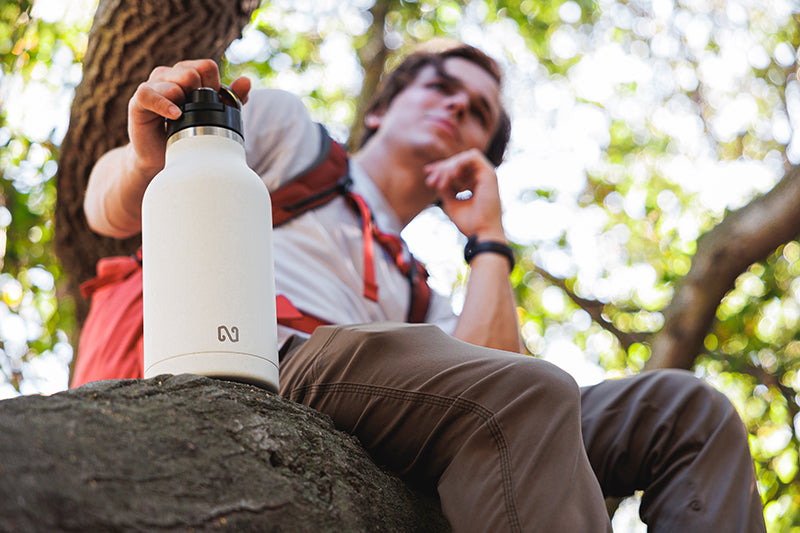There are many different types of reusable plastic but only one kind contains BPA, and that’s polycarbonate. Products like water bottles made from other plastics like Tritan are considered BPA-free because they don’t contain bisphenol-A, BPA for short.
We’ll take you through the different types of reusable plastic and show you how to spot BPA-free plastic.
What is BPA Free Plastic?
BPA-free plastic is any plastic that’s not polycarbonate.
Polycarbonate is a virtually unbreakable, dishwasher-safe, glass-like plastic. For years, polycarbonate was the top material used to make unbreakable plastic glasses, baby bottles and food storage containers. But polycarbonate contains trace amounts of bisphenol-A, which is a concern for many.
If you can identify products made from the following five types of BPA-free plastics, you’ll be sure to avoid BPA.
- Tritan Plastic
Tritan plastic is the closest competitor to polycarbonate in terms of glass-like clarity and performance. Products made from Tritan plastic are as durable, unbreakable and dishwasher-safe as polycarbonate items and deliver the added perk of being completely BPA-free. Tritan plastic is also heat-resistant and can handle temperatures up to 180°F, and some even as high as 212°F.
- Polypropylene (PP) Plastic
Like Tritan, polypropylene plastic is and always has been BPA-free and is far easier to spot than Tritan items.
Unlike Tritan and polycarbonate, polypropylene plastic is never perfectly clear. It’s also rubbery in texture and cups can even be squishy. If you notice that, you can be sure the products are BPA-free polypropylene.
- Melamine Plastic
Melamine plastic is another common BPA-free plastic generally used for dishes and dinnerware. Melamine plastic tableware is always opaque and closely resembles ceramic and stoneware in look and feel. It’s never clear like most polycarbonate plastic products.
- Acrylic and SAN Plastic
BPA-free acrylic and SAN (styrene acrylonitrile) plastic products can closely resemble polycarbonate items, but there are differences. Goods made from these plastics generally aren’t as durable, so they’re rarely listed as unbreakable. SAN is dishwasher safe, but acrylic will generally be labeled hand wash only.
- Recycled Polypropylene (rPP) and Other Eco-Friendly Plastics
Eco-friendly plastics like rPP are made with post-consumer recycled polypropylene products, while other biodegradable “plastics” are crafted with bamboo, corn and even avocado pits. All of these bio-plastics are BPA-free, sustainable and recyclable.
If in Doubt, Check the Label
If a plastic item isn’t clearly labeled BPA-free, look at the care instructions.
Acrylic items are generally marked hand wash or top rack dishwasher safe, and SAN items say dishwasher safe. But neither will say unbreakable. Unlike polycarbonate and Tritan, acrylic and SAN can break.
Tritan and polycarbonate are the only glass-like plastics that will be labeled both unbreakable and dishwasher safe.
Solid-color plastic dishes can be either melamine or polypropylene. The giveaway here is that melamine is very rigid while polypropylene is softer and more rubbery.

